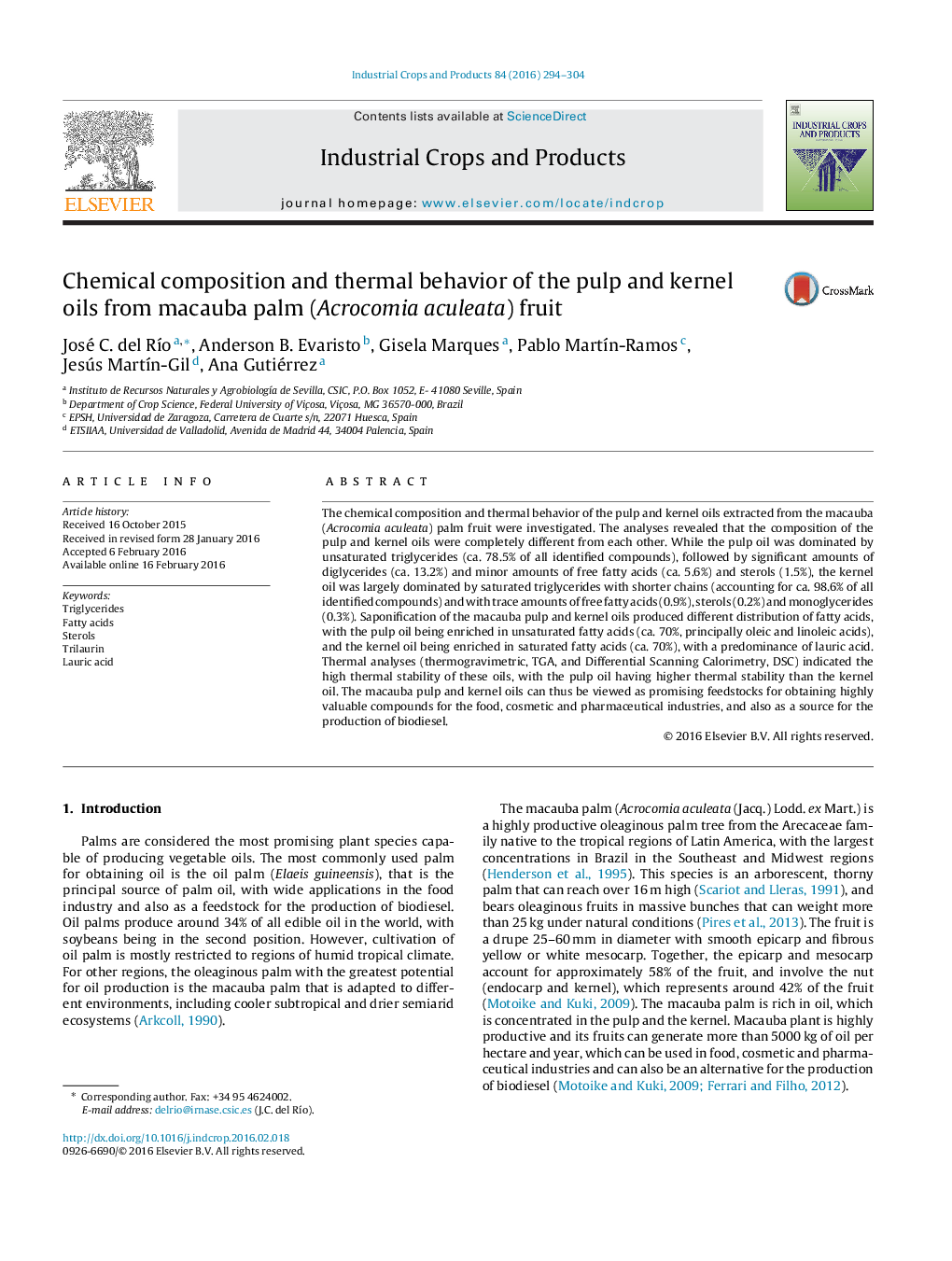| کد مقاله | کد نشریه | سال انتشار | مقاله انگلیسی | نسخه تمام متن |
|---|---|---|---|---|
| 4512379 | 1624826 | 2016 | 11 صفحه PDF | دانلود رایگان |

• Macauba pulp and kernel oils have completely different composition.
• Pulp oil is made up mostly by unsaturated triglycerides.
• Kernel oil is composed mostly of saturated triglycerides of shorter chains.
• Pulp oil presents higher thermal stability than the kernel oil.
The chemical composition and thermal behavior of the pulp and kernel oils extracted from the macauba (Acrocomia aculeata) palm fruit were investigated. The analyses revealed that the composition of the pulp and kernel oils were completely different from each other. While the pulp oil was dominated by unsaturated triglycerides (ca. 78.5% of all identified compounds), followed by significant amounts of diglycerides (ca. 13.2%) and minor amounts of free fatty acids (ca. 5.6%) and sterols (1.5%), the kernel oil was largely dominated by saturated triglycerides with shorter chains (accounting for ca. 98.6% of all identified compounds) and with trace amounts of free fatty acids (0.9%), sterols (0.2%) and monoglycerides (0.3%). Saponification of the macauba pulp and kernel oils produced different distribution of fatty acids, with the pulp oil being enriched in unsaturated fatty acids (ca. 70%, principally oleic and linoleic acids), and the kernel oil being enriched in saturated fatty acids (ca. 70%), with a predominance of lauric acid. Thermal analyses (thermogravimetric, TGA, and Differential Scanning Calorimetry, DSC) indicated the high thermal stability of these oils, with the pulp oil having higher thermal stability than the kernel oil. The macauba pulp and kernel oils can thus be viewed as promising feedstocks for obtaining highly valuable compounds for the food, cosmetic and pharmaceutical industries, and also as a source for the production of biodiesel.
Figure optionsDownload as PowerPoint slide
Journal: Industrial Crops and Products - Volume 84, June 2016, Pages 294–304